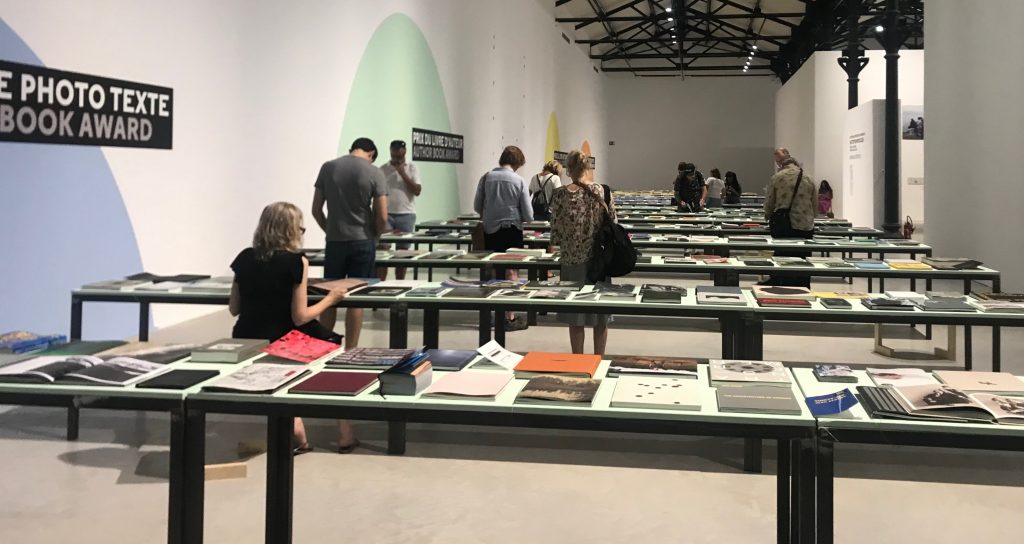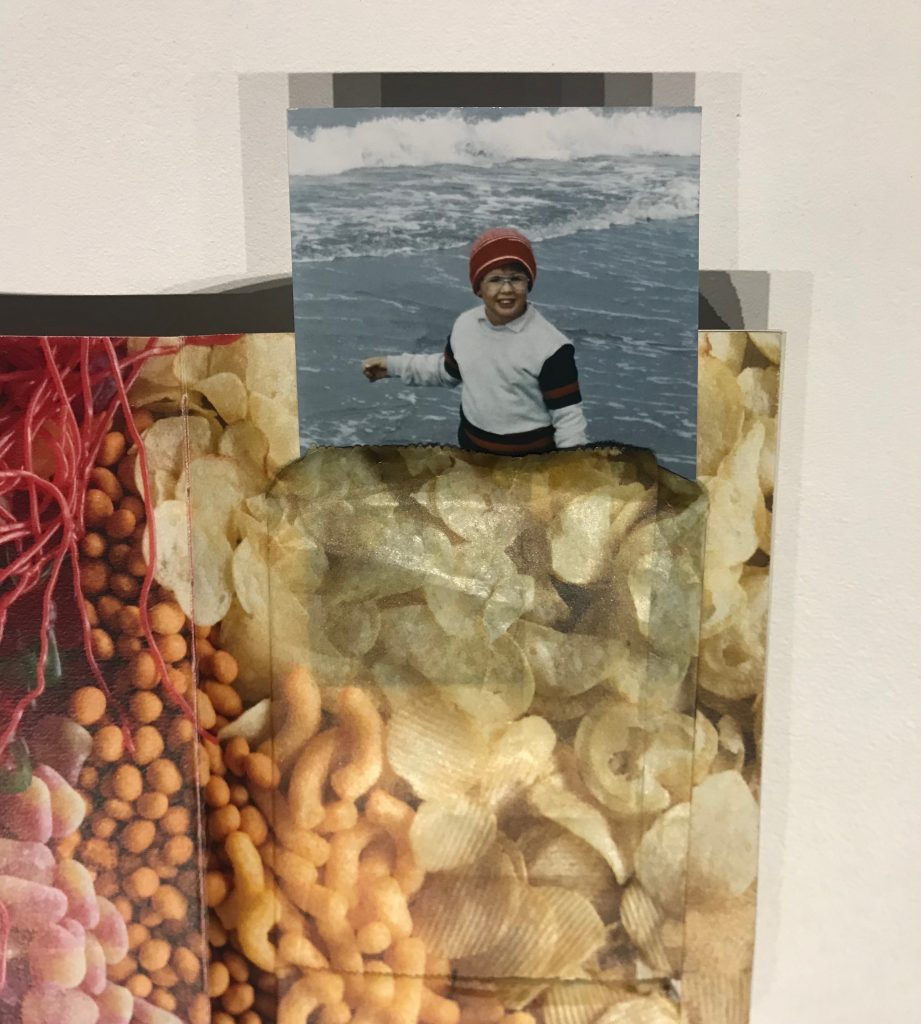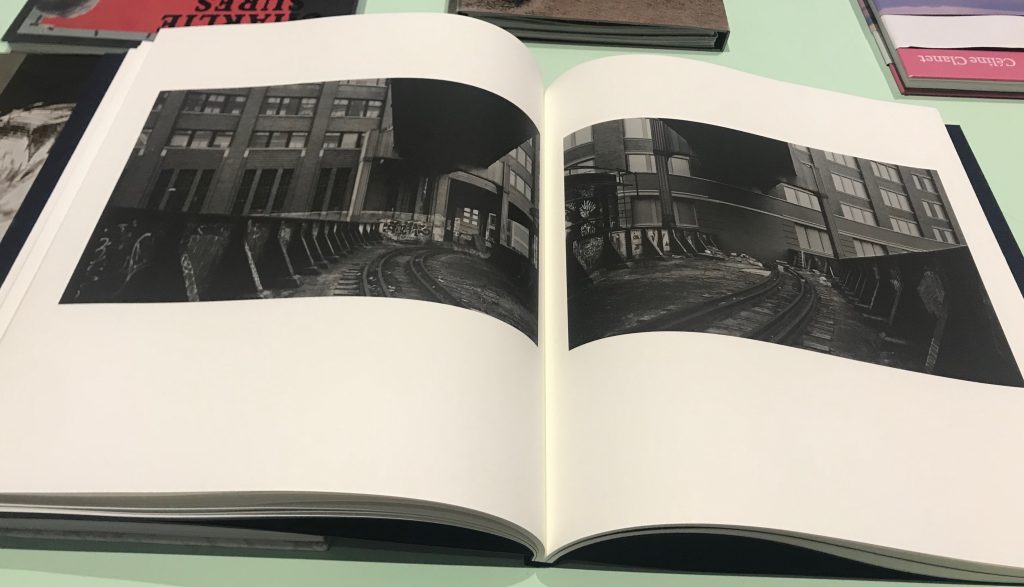Les Rencontres D’Arles, 26th-28th July 2019

Working through the display of shortlisted work for the Luma Rencontres Dummy Book Award 2019 gave an opportunity to look at some complex forms of book, incorporating a range of different types of image and text presented on different types of paper and in different formats (for instance, books within books, inserted cards and images, foldout sections and gatefold images, single images in envelopes). The most complex was Katherine Longly’s handmade artists book To tell my real intentions, I want to eat only haze like a hermit, which explores the relationship between food and the body in Japanese society.
Longly interviewed people over a period of time, and the book contains testimonies, photographs, illustrations and archive material. She also gave participants disposable cameras in order to explore and illustrate this complex relationship from their own point of view.
The book is of interest to me as an artefact in its own right, and it was interesting to see how inserts, tri-folds and gatefolds, tipped-in photographs and half-pages were used with montage, photographs, texts (including letters, notes, menus, recipes, tables and graphs), diagrams and drawing. Four types of paper are used in the construction of the book.

The work itself, on the borders of art and anthropology, also resonates with my own, in that it is collaborative, involves participant image-making and a range of forms of images, texts and artefacts. The book represents one possible form of output from the project, and Longly’s book demonstrates how a number of visual strategies can be used in book form. She has organised the book as sections, with each section focusing on one of the participants. Whilst the images are made by the participants (it is not immediately clear whether all the images are theirs, or whether some are made by Longly), attribution for the overall project and the book itself clearly belongs to Longly (appropriate attribution of work in these kinds of projects clearly being an important issue, and one that I will have to resolve in the final presentation of my project). Whether I produce a book in this form is still an open question, and depends on whether I want to force an order in which the reader engages with images and texts, or whether I want a more open and exploratory form of presentation (such as an archive, or set of micro-archives, from which the reader can create their own order and juxtapositions). Colberg’s (2017) analysis of photobooks, and schema for relating project concept to materials, design and sequencing has been helpful in thinking this through.
The wider 2019 Book Award entries illustrated the diversity of forms of books being produced, and reinforced the importance of strong editing, book design, quality of material, and the need to ensure coherence and consistency in the relationship between concept, form and content.

In Dual Landscapes New York 1999: Fifteen Diptychs, Alberto Piovano has used the book form to good effect to present diptychs where the relationship between the two images varies subtly. He has printed images on single sided photo paper, folded and bound to enable facing pages to be viewed as diptychs (see earlier post about ways of dealing with printing on single sided photo paper in handmade books).

Other books of particular interest. Monica Alcazar-Duarte‘s (2018) The New Colonists uses gatefold pages at key points in the book to insert contrasting images relating to space travel into a mundane sub-urban narrative. An app can also be used to seek out images and information concealed within the images, including 3D animations of spy satellites and space colonies, thus heightening the juxtaposition of the mundane with visions of a new colonial future.

Rif Spahni’s (2018) Son Boter elegantly and simply combines a collection of prints on cards inserted into an envelope which is part of the cover with a small book. This allows both sequencing (within the book) with exploration of the juxtaposition of images by the reader (with the cards)
References
Alcazar-Duarte, M. 2018. The New Colonists. London: Bemojake. https://www.photobookstore.co.uk/photobook-the-new-colonists.html [accessed 30.07.19]
Colberg, J. 2017. Understanding Photobooks: The form and content of the photographic book. London: Routledge.
Longly, K. 2018. To tell my real intentions, I want to eat only haze like a hermit. Handmade artist edition. http://reminders-project.org/rps/to_tell_my_real_intentions_saleen/ [accessed 30.07.19]
Spahni, R. 2018. Son Boter. Joan Miró. Text by Gustavo Martín Garzo. Barcelona. Ediciones Anómalas. https://www.edicionesanomalas.com/en/producto/son-boter-joan-miro-3/ [accessed 30.07.19]
